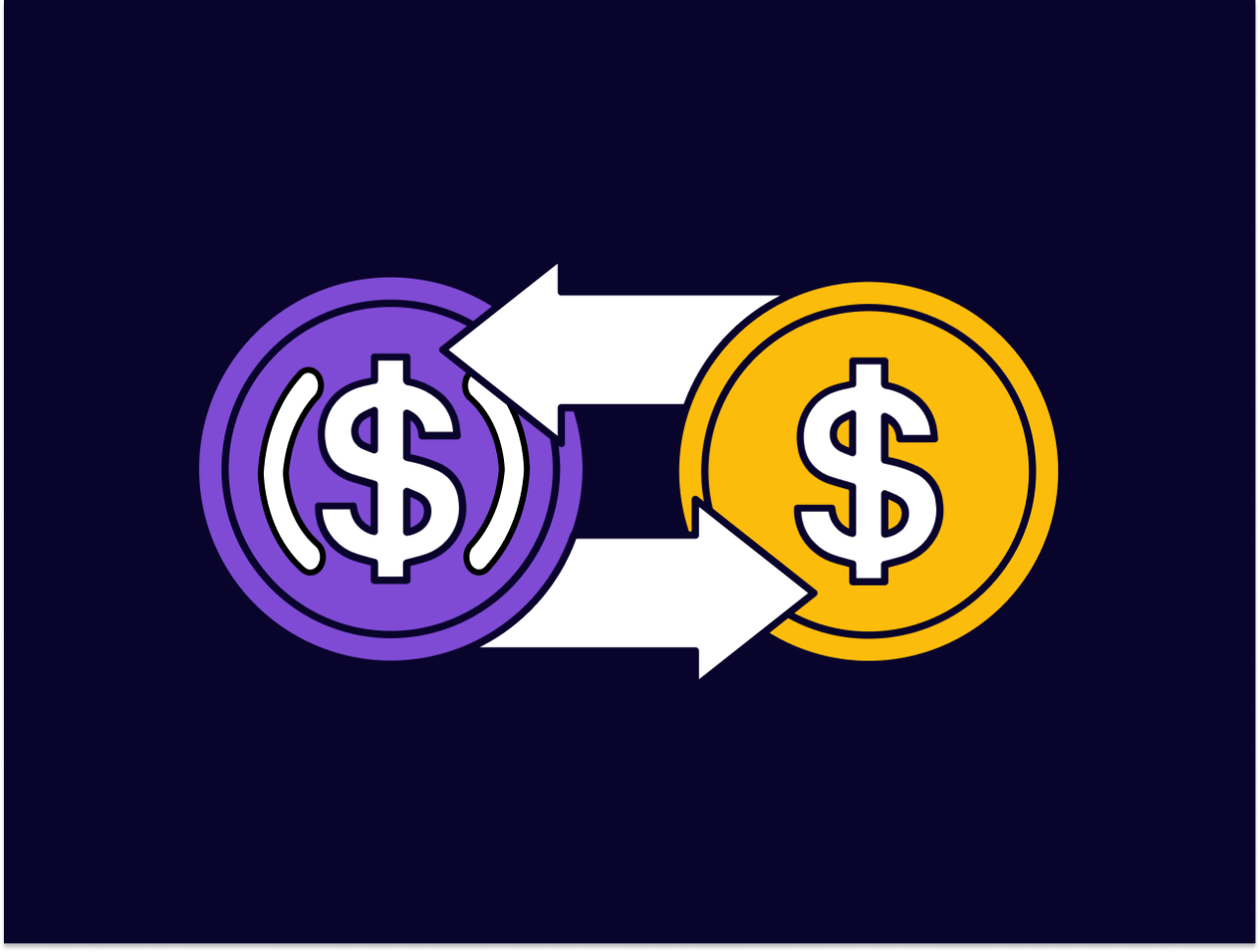What Is USDC Backed By?

I’d buy that for a dollar!
“USDC” stands for “US Dollar Coin”. It’s a “stablecoin” – a digital token that stands in for a real-world asset and tracks its real-world value.
Even in the days when crypto was far away from traditional finance, the sector needed something to represent the US dollar when crypto was being traded.
USDC is one of the biggest and most stable stablecoins. Before USDC, the biggest stablecoins were Tether (USDT) and DAI.
Both of these two are imperfect beasts, so in 2018, Circle, a fintech that counted Goldman Sachs amongst its investors, teamed up with the exchange Coinbase to create a new stablecoin: USDC. The idea was to create a shining example of stablecoin, backed by real currency.
What makes USDC superior?
“USDC is issued by regulated financial institutions, backed by fully reserved assets, redeemable on a 1:1 basis for US dollars and governed by Centre, the consortium that sets technical, policy and financial standards for USDC. USDC reserves are reviewed monthly and attested to by Grant Thornton LLP” Circle.
The ideal for a stablecoin is that it’s backed by assets. And not only “enough” assets, but “more than enough” assets to redeem every single coin if it were necessary.
And so, USDC has auditors checking it out. And not just once: every month! This was a big news item four years ago when the coin was first born.
Although these are commonly called “audits”, it’s actually the wrong term. Their auditors, Grant Thornton LLC provide “attestations”: which is basically a statement that they have no reason to disbelieve the information Circle provides.
An actual audit every month would be impossible, but firm Grant Thorton published one in June 2021.
Again, the contrast is with Tether. Another contrast is that USDC is managed by a proper financial management company, and Tether… isn’t.
Two other classes of stablecoins that contrast with the stability of USDC are DAI (the first stablecoin, backed by crypto loans), and other “algorithmic stablecoins” which use the coding equivalent of accounting tricks to persuade everyone they’re worth $1. They are… until they’re not.
USDC was born on Ethereum…
USDC also started life as a coin on the Ethereum blockchain (Tether started on a Bitcoin bolt-on layer, but soon sprouted an Ethereum version).
But these days, there’s more to blockchain than Bitcoin and Ethereum (ssshhh, don’t tell anyone!). Other blockchains need dollar equivalents too – they’re handy to have around.
So, USDC is now on the blockchains “Stellar”, “Algorand”, “Solana”, “Tron”, “Hedera”, “Avalanche” and “Flow”. Many of these blockchains are referred to as “ETH Killers”, though blockchains claiming to be the murderer of Ethereum tend to come and go with alarming regularity (NXT, EOS and NEO come to mind).
The Future of USDC
Until the US Government pulls its finger out and does a proper digital dollar (the banks are against this, just in case people realise they’re not really needed!), USDC will rule the roost (in prestige and trustworthiness, if not in market share).
One of the big things going for it is partnerships with payment providers such as Visa and Mastercard, which indicates that USDC is a major bridge between the regular financial system and the digital one in the future.
USDC also has a role in banking the unbanked: as a reserve currency, US Dollars are almost a worldwide currency. For countries with undeveloped banking systems or countries suffering disruption to their financial systems, USDC can be a lifeline for consumers and businesses, as it can go where regular dollars can’t. For instance, Ukrainians have found it very handy to have around during the Russian invasion.
One of the other USDC innovations is their API:
- “Each of Circle’s three powerful API suites (Payments, Payouts, and Accounts) shares a common set of core functionality that allows businesses to manage their own Circle Account in a programmatic way.
- With a Circle Account your business can deposit traditional money from 80+ countries and seamlessly convert them into “digital currency dollars”: USDC.
- You can then use USDC for everyday payments and treasury flows.
This core set of APIs allow you to:
- Transfer digital currency (USDC) in and out of your Circle Account.
- Register your own business bank accounts – if you have them.
- Make transfers from / to your business bank account while seamlessly converting those funds across digital currency and traditional fiat.”
This API almost guarantees much more take-up of USDC.
Of course, we would be amiss if we didn’t mention that you can buy USDC at AQRU and earn interest on it (up to 0% at the time of writing).
Once you’ve verified (make sure your selfie doesn’t look miserable!), you can USDC yourself further by transferring your existing coins in, or by transferring GBP or Euro to your AQRU account and buying USDC at the relevant foreign exchange rate (with no commission).
If that sounds like a faff, you can also buy USDC with a debit card from third-party in-app payment provider MoonPay.
Whichever way you do it, press “invest” and start earning.